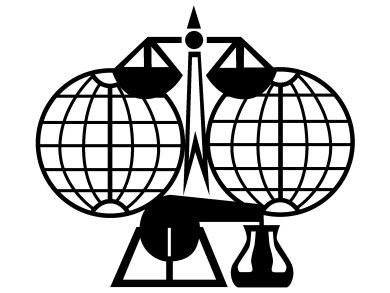Porous materials are used in many areas of applied science and engineering and we also encounter them in everyday life, for example, zeolites in washing powder. Zeolites are man-made or naturally occurring materials that have pores the size of molecules, which can be tailored to specific uses in, for example, catalysis or gas storage.
Molecules that are too big may be excluded from the pores and thus may not take part in the same reactions as smaller molecules that can enter the interconnected channel system, or they may be efficiently separated from a minor size component, such as water being soaked up from organic solvents.
Metal-Organic Frameworks (MOF) and PCPs (Porous Coordination Polymers) are new contenders on this porous materials scene with promises of different applications and sometimes properties radically different from those of zeolites. They comprise metal ions, or polynuclear metal entities, bridged by organic molecules. Because of this, the geometries are more varied and also the environment inside the pores is different and can be varied to a greater extent than for zeolites.
As is often the case, practice precedes theory and synthesis precedes nomenclature and terminology. This has certainly also been the case for this area, an interdisciplinary research field with origins in coordination and solid-state chemistry that is now also attracting the interest of the chemical industry.
The diversity in both focus and scientific basis of the researchers involved has lead to numerous terminology suggestions and practices for this class of compounds and of several subgroups within. Additionally, a disquieting number of abbreviations are also in use and practices are not consistent among research groups, causing unnecessary conflicts and confusion.


Figure 1. Two tentative hierarchies of coordination polymers and metal-organic frameworks. The bottom descriptors are optional and not mutually exclusive. Three-letter topology codes according to O’Keeffe et al.[1]
The International Union of Pure and Applied Chemistry, IUPAC, has therefore charged a task group consisting of prominent researchers in the field with the delicate task of defining a suitable terminology that can gain a broad acceptance, while at the same time not deviating too much from the picture the general chemical public has got from the many articles this highly prolific research area has generated in various science news magazines and basic textbooks.
The task group consists of Michael O’Keeffe, Arizona State University, USA, Neil Champness, University of Nottingham, UK, Susumu Kitagawa, Kyoto University, Japan, Stuart Batten, Monash University, Australia, Javier García-Martínez, University of Alicante, Spain, Xiao-Ming Chen, Sun Yat-Sen University, Beijing, China, Jan Reedijk, Leiden University, the Netherlands, and Myunghyun Paik Suh, Seoul National University, South Korea, as well as myself as chairman.
We will have a final meeting on 24 May 2012, in Stockholm preceded by a one day symposium on 23 May on “Metal-organic frameworks, porous coordination polymers and zeolites” organized in collaboration with the “Trends in Inorganic Chemistry” symposia of the Swedish Chemical Society’s Inorganic division.
Proceedings from the meeting will be published in an open access special issue of Zeitschrift für Kristallographie, in 2013.
Moreover, a task group dealing specifically with nomenclature issues of these materials, as well as of more traditional inorganic polymers, has just started its work under the chairmanship of Richard Jones, University of Kent, Canterbury, UK.
[1] M. O’Keeffe, M. A. Peskov, S. Ramsden, O. M. Yaghi, Acc. Chem. Res. 2008, 41, 1782. DOI: 10.1021/ar800124u
 Lars Öhrström is professor of inorganic chemistry at Chalmers University of Technology, Gothenburg, Sweden, where he specializes in coordination chemistry. He obtained his engineering degree from the Royal Institute of Technology, Stockholm, Sweden, where he also got his Ph.D. in inorganic chemistry in 1993. He then did post-doctoral work on molecule based magnetic materials with Paul Rey at the Commissariat à l’Energie Atomique (CEA) in Grenoble, France. In 1995 he returned to Sweden and started his work at Chalmers, becoming a senior lecturer in 1997 and professor in 2004. He is also a Titular Member of IUPAC’s Inorganic Chemistry Division.
Lars Öhrström is professor of inorganic chemistry at Chalmers University of Technology, Gothenburg, Sweden, where he specializes in coordination chemistry. He obtained his engineering degree from the Royal Institute of Technology, Stockholm, Sweden, where he also got his Ph.D. in inorganic chemistry in 1993. He then did post-doctoral work on molecule based magnetic materials with Paul Rey at the Commissariat à l’Energie Atomique (CEA) in Grenoble, France. In 1995 he returned to Sweden and started his work at Chalmers, becoming a senior lecturer in 1997 and professor in 2004. He is also a Titular Member of IUPAC’s Inorganic Chemistry Division.
Öhrström’s research interests are experimental and theoretical approaches to molecule based materials and crystal engineering with focus on coordination compounds and three-dimensional nets, “Metal-Organic Frameworks”, bioinorganic chemistry and organometallic chemistry.
Also of interest:
- IUPAC Project Details: Coordination polymers and metal organic frameworks: terminology and nomenclature guidelines
- IUPAC Project Details: Terminology and Nomenclature of Inorganic and Coordination Polymer
- Conference: Trends in Inorganic Chemistry Symposium (TINC)
- Coordination polymers, metal–organic frameworks and the need for terminology guidelines,
S. R. Batten, N. R. Champness, X.-M. Chen, J. Garcia-Martinez, S. Kitagawa, L. Öhrström, M. O’Keeffe, M. P. Suh, J. Reedijk,
CrystEngComm 2012.
DOI: 10.1039/C2CE06488J





The two schemes are tentative suggestions for MOF/CP terminology. Please comment to task group chair at
[email protected]
The task group is currently writing up recommendations to be published in Pure and Applied Chemistry (IUPAC’s official journal).
A preview of these recommendations will be presented at the MOF 2012 conference in Edinburgh (see http://events.dechema.de/events/en/mof2012.html) and at the ICCC in Valencia (see http://iccc40.com/). Lars
The IUPAC 2013 recommendations on metal-organic frameworks and coordination polymers are now final and online:
http://pac.iupac.org/publications/pac/pdf/2013/pdf/8508×1715.pdf